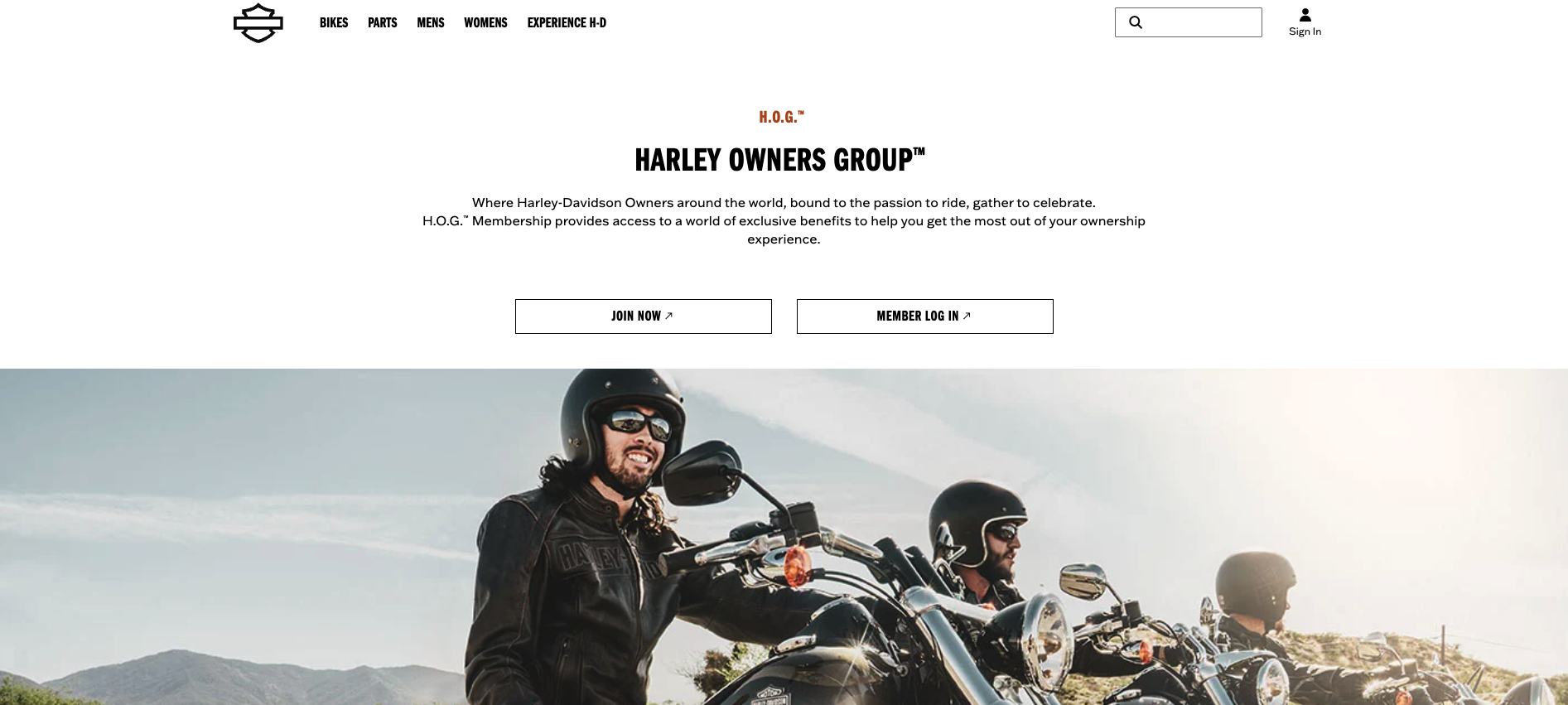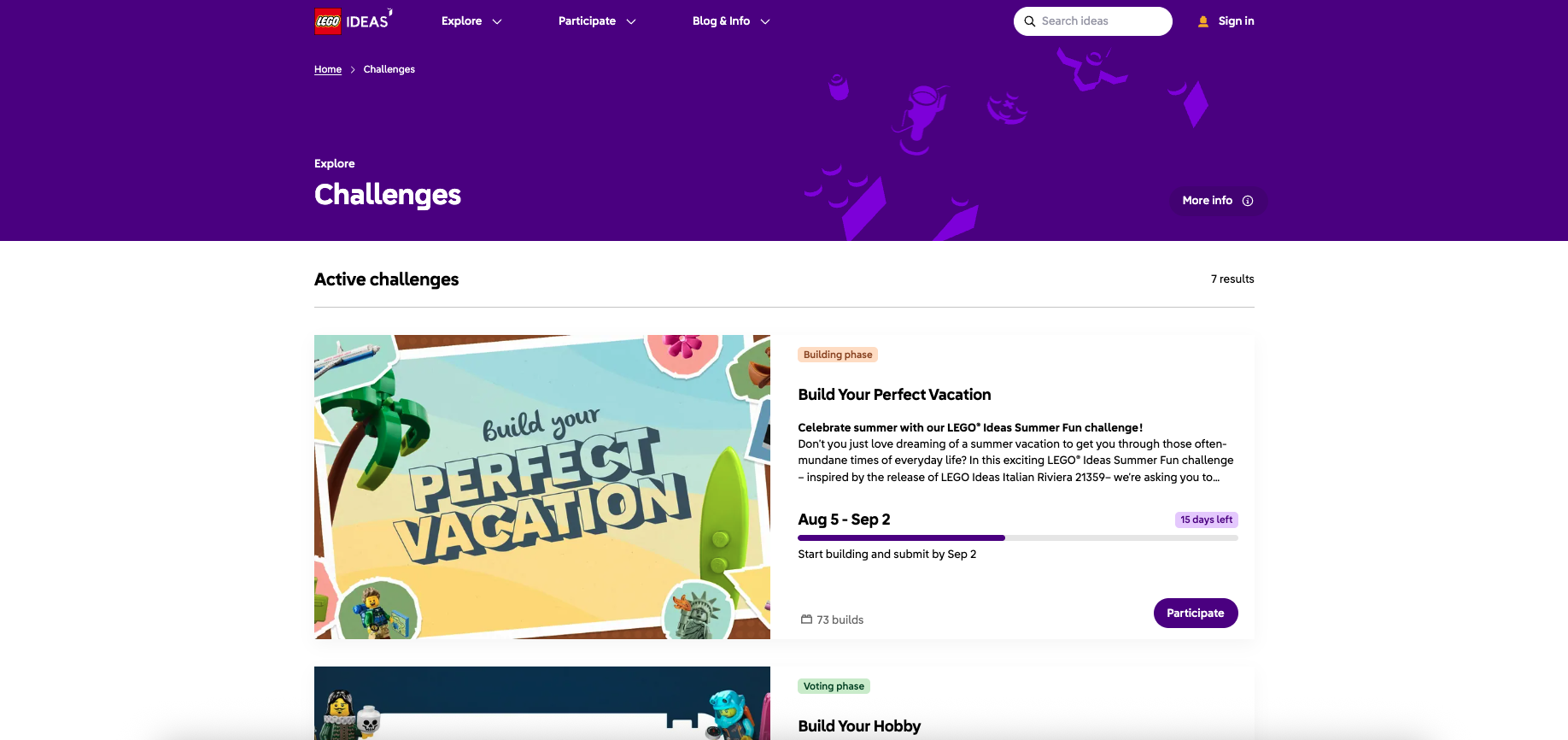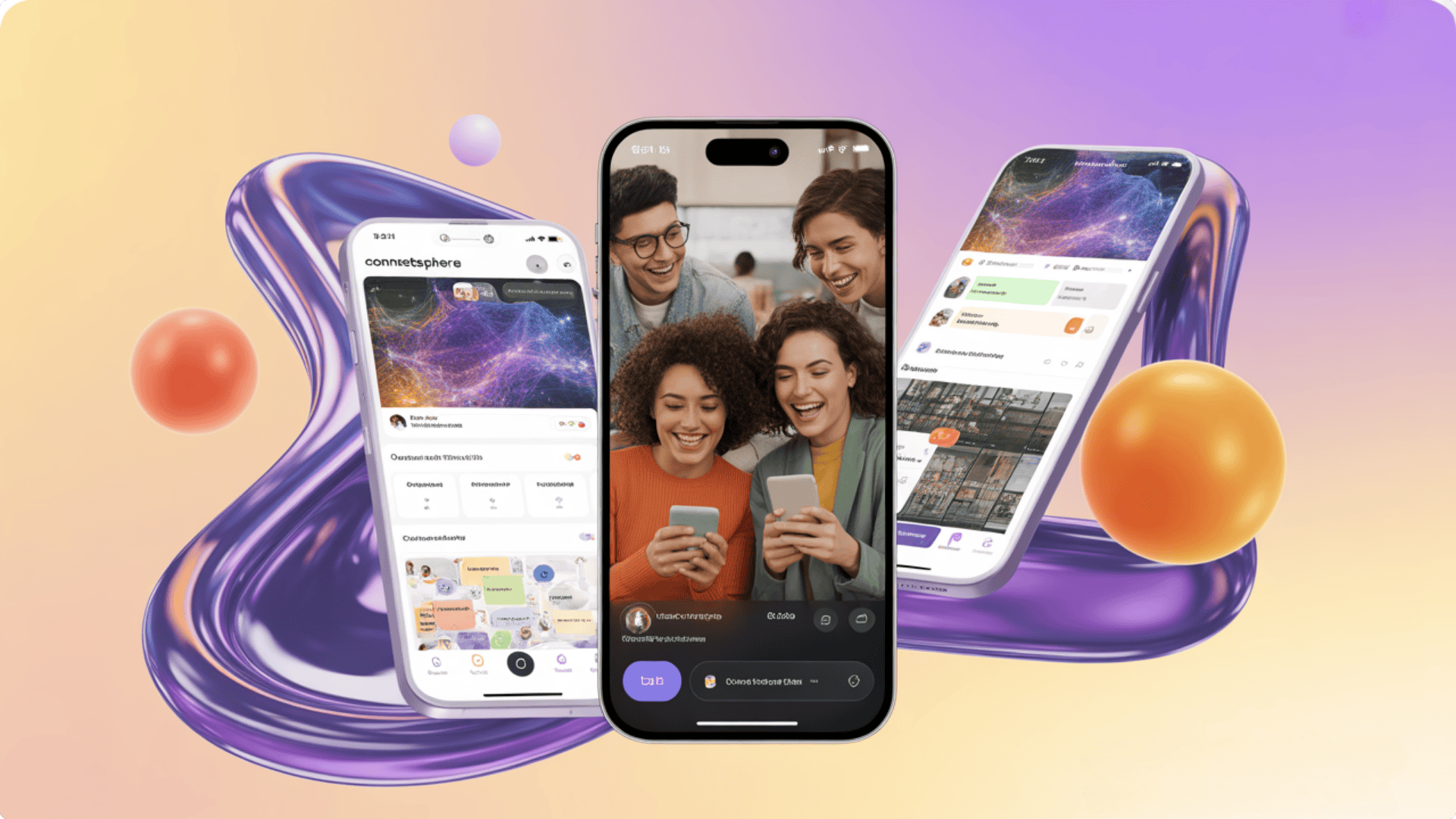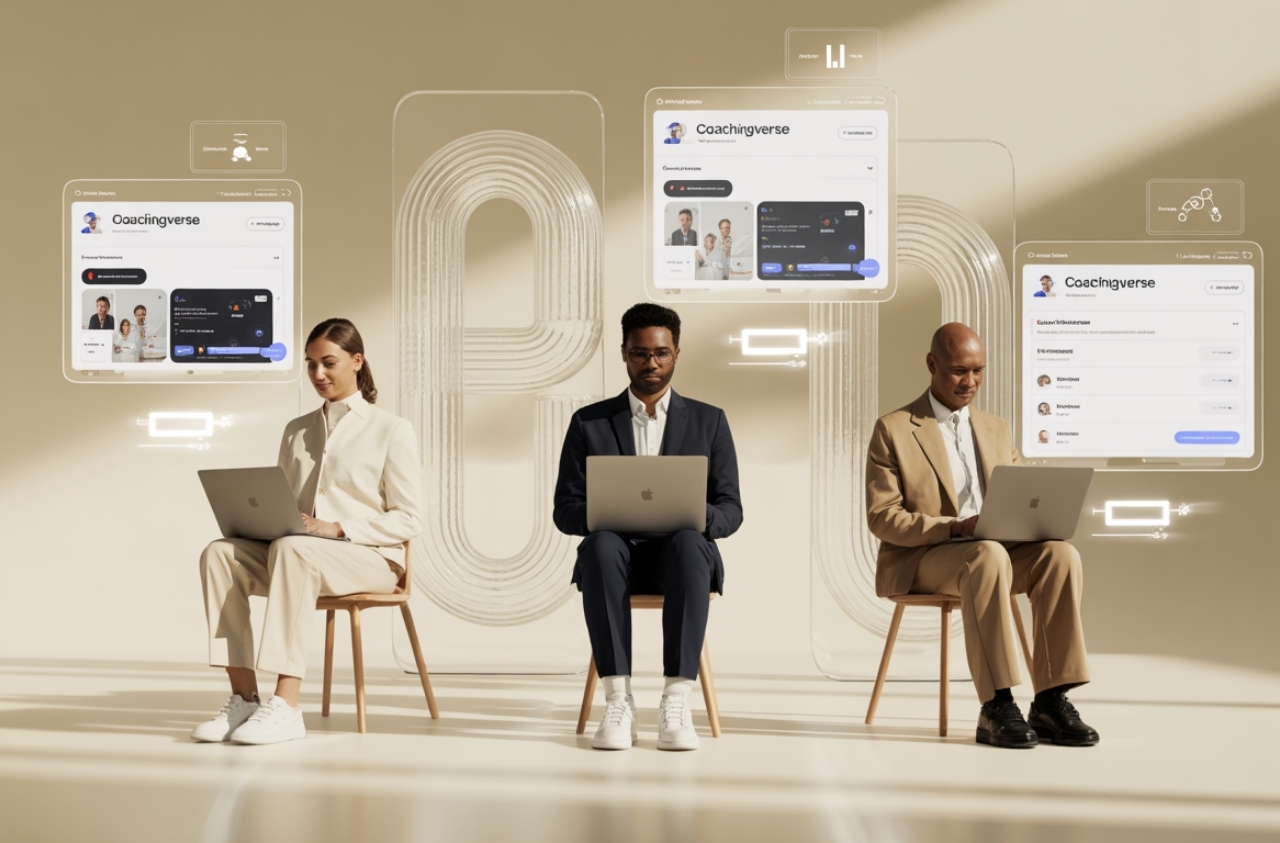“Online Community is the new ChatGPT and Google search because that’s where people search for information and then decide what to buy,” said Kathleen Booth, SVP of Pavilion—a $10M ARR business built on the power of community.
She’s absolutely right. Building a thriving business isn’t just about having a great product anymore. According to a Microsoft report, 61% of customers have stopped doing business with a brand due to poor customer service experience. The solution? Creating a community that goes far beyond just another Facebook group or Slack workspace.
In this comprehensive guide, we’ll explore what online communities really are, showcase three incredible examples that drive millions in revenue, and give you free growth templates with ChatGPT prompts to build your own community empire.
Ready to transform casual customers into raving fans? Let’s dive in.
What Is a Community?
Before we talk about online communities, let’s get one thing crystal clear: a community isn’t just a Facebook group you create and hope people join.
A true community is an ecosystem—a living, breathing environment where people connect around shared values, goals, or interests. Think of it as the foundation of your brand experience, both online and offline. Your community includes:
- Every touchpoint customers have with your brand
- The culture you create around your products or services
- The relationships members build with each other (not just with you)
- The shared experiences that happen in your spaces and beyond
Here’s what most businesses get wrong: they think slapping together a private Facebook group or Discord server equals community building. That’s like thinking a hammer makes you a carpenter.
Your community is how you make people feel connected to something bigger than themselves. It’s your brand’s heartbeat, and your online community is just one (albeit crucial) expression of that larger ecosystem.
What Is an Online Community? The Complete Definition
Now that we’ve established what a community truly means, let’s zoom in on the digital piece.
An online community is a digital space where people with shared interests, goals, or connections to your brand gather to interact, share knowledge, and build relationships. But here’s the key difference from social media: online communities are purpose-driven rather than connection-driven.
While social networks like Facebook connect people who already know each other, online communities bring together strangers who share common interests or challenges. The magic happens when these strangers become friends, advocates, and ultimately, your most valuable customers.
According to the Community Roundtable, active community members spend 19% more annually with brands than non-members. That’s the power of turning customers into community.
Key characteristics of successful online communities include:
- Shared purpose or interest that brings members together
- Regular interaction between members (not just with the brand)
- User-generated content and peer-to-peer support
- Clear guidelines and moderation that maintain quality
- Value creation that goes beyond just consuming content
7 Types of Online Communities You Should Know
Understanding different community types helps you choose the right approach for your business:
1. Customer Support Communities Best for: SaaS companies, tech products, complex services. These communities serve as a hub for users to ask questions, troubleshoot issues, and share solutions, often reducing the need for direct customer support tickets. By fostering peer-to-peer assistance, they build a self-sustaining knowledge base that enhances user satisfaction and lowers operational costs for the business.
2. Brand Advocacy Communities Best for: Consumer brands, lifestyle products, mission-driven companies. These spaces empower passionate fans to champion the brand through stories, reviews, and referrals, turning satisfied customers into vocal promoters. They cultivate loyalty and authenticity, amplifying word-of-mouth marketing and attracting new audiences through genuine endorsements.
3. Professional Development Communities Best for: B2B services, coaching, education. Focused on career growth, these communities offer networking opportunities, skill-building resources, and mentorship to help members advance in their fields. Through discussions, workshops, and collaborations, they facilitate knowledge exchange and open doors to professional opportunities.
4. Learning Communities Best for: Course creators, trainers, educational institutions. Centered on education and skill acquisition, these communities provide structured learning paths, interactive discussions, and collaborative projects to support members’ growth. They encourage progress tracking and peer feedback, creating an environment where knowledge is actively shared and applied.
5. User-Generated Content Communities Best for: Creative tools, social platforms, media companies. These communities thrive on members creating and sharing original content, such as ideas, artwork, or media, which inspires creativity and engagement. By showcasing user contributions, they generate fresh material that enhances the community’s value and promotes organic growth.
6. Local/Geographic Communities Best for: Regional businesses, event organizers, local services. These connect people in specific areas to discuss local issues, organize events, and support neighborhood initiatives, strengthening regional ties. They facilitate targeted interactions, like sharing recommendations or coordinating meetups, to build a sense of belonging within a defined locale.
7. Hobby/Interest Communities Best for: Niche products, specialized services, enthusiast brands. Dedicated to shared passions or hobbies, these communities allow members to exchange tips, experiences, and resources in a focused environment. They foster deep connections among like-minded individuals, often leading to collaborations, events, and a vibrant exchange of enthusiasm.
3 Incredible Online Community Examples (And Why They Work)
Let’s examine three communities that have mastered the art of turning customers into lifelong advocates—and generating serious revenue in the process.
Harley-Davidson HOG Community

The Harley Owners Group (HOG) isn’t just a motorcycle club—it’s a lifestyle empire that generates over $1 billion in revenue annually for Harley-Davidson.
How It Works:
- Local chapters that organize rides and events worldwide
- Exclusive member benefits including riding insurance and roadside assistance
- Digital platform connecting 850,000+ members globally
- Brand experiences like rallies, bike shows, and charity rides
Why It’s So Successful: HOG taps into something deeper than product ownership—it sells identity and belonging. Members don’t just buy motorcycles; they join a brotherhood that extends far beyond the bike itself. The community creates emotional investment that leads to:
- 90% customer retention rate (compared to 50% industry average)
- $18,000+ lifetime customer value
- Organic word-of-mouth marketing worth millions
Key Takeaway: Build around identity, not just product features. When people see your community as part of who they are, price becomes irrelevant.
LEGO Ideas Community
LEGO transformed from near-bankruptcy in 2003 to generating $7.8 billion in revenue by 2023, largely thanks to their community-driven approach.

How It Works:
- User-generated designs where fans submit new LEGO set ideas
- Voting system where community members decide which designs get produced
- Creator rewards including royalties and recognition for accepted designs
- Showcase platform where builders share creations and techniques
Why It’s So Successful: LEGO turned customers into co-creators, making them feel like partners in the brand’s success. This approach generates:
- 1+ million active community members
- Hundreds of fan-designed sets that become bestsellers
- Reduced R&D costs through community innovation
- Massive social proof and organic marketing
Key Takeaway: Make your community members feel like partners, not just customers. When they help create your products, they become your biggest advocates.
Tony Robbins Community
Tony Robbins has built a community ecosystem worth over $7 billion that extends far beyond his personal brand.

How It Works:
- Event communities that continue conversations after seminars
- Coaching circles where members support each other’s growth
- Digital platforms providing ongoing training and resources
- Alumni networks connecting graduates of different programs
Why It’s So Successful: Robbins created a transformation ecosystem where community members become success stories, which then attract new members. This creates:
- 95% event satisfaction rates
- $63+ million annually from repeat customers
- Organic referral system generating 40% of new business
- Members who stay engaged for 10+ years on average
Key Takeaway: Focus on transformation, not just information. When your community helps people become better versions of themselves, they’ll never want to leave.
difference between an online community and social media groups?
The difference between online community and social media groups comes down to purpose and depth. Social media groups are typically discussion-focused with minimal structure, while online communities are ecosystem-focused with multiple touchpoints, resources, and member experiences.
Online communities offer:
- Structured onboarding and member journeys
- Comprehensive resource libraries
- Multiple interaction formats (forums, events, courses)
- Advanced moderation and community management tools
- Integration with business systems and customer data
Social media groups are better for casual discussion, while online communities excel at creating lasting relationships and business outcomes.
5 Proven Benefits Of Online Communities For Business Growth
Building an online community isn’t just a nice-to-have anymore—it’s a business imperative. Here’s why:
Enhanced Customer Experience & Satisfaction
According to Microsoft’s research, 90% of customers think they should be able to provide feedback to businesses, but only 24% believe they get that opportunity. Online communities bridge this gap by creating direct communication channels.
When customers can ask questions, share experiences, and get help from both your team and fellow community members, satisfaction scores soar. You’re not just solving individual problems—you’re building a knowledge base that helps everyone.
Increased Customer Retention & Loyalty
Bain & Company research shows that satisfied customers are five times more likely to purchase again and four times more likely to refer others. Communities supercharge this effect by creating emotional connections that transcend individual transactions.
When someone feels part of your community, they’re not just buying your product—they’re investing in relationships and shared experiences that keep them coming back.
Higher Revenue Through Community Engagement
Here’s the bottom line: community-engaged customers spend more money. A lot more. Companies focused on customer experience drive 4-8% more revenue than competitors, according to Bain & Company.
Active community members don’t just buy once—they become repeat customers, upgrade to premium offerings, and purchase complementary products because they trust your brand implicitly.
Valuable Customer Feedback & Insights
Your community becomes your real-time focus group. Instead of expensive market research, you get honest feedback about what’s working, what isn’t, and what customers actually want.
This feedback loop helps you:
- Develop better products faster
- Identify emerging market trends
- Solve customer problems proactively
- Create content that truly resonates
Peer-to-Peer Support & Trust Building
Nielsen’s Global Trust in Advertising report found that 83% of consumers trust peer recommendations over business advice. Your community members become your most credible salespeople.
When potential customers see real people sharing genuine success stories, overcoming challenges, and recommending your solutions, it carries far more weight than any marketing campaign ever could.
How long does it take to build a successful online community?
How long it takes varies significantly, but most successful communities see meaningful traction within 3-6 months and reach maturity around 12-18 months.
Timeline breakdown:
- Months 1-3: Foundation building, initial member acquisition, establishing culture
- Months 4-6: Growth acceleration, content rhythm, member-generated discussions
- Months 7-12: Scale and systematization, community-led initiatives
- 12+ months: Self-sustaining growth, advanced member experiences
Success factors that accelerate timeline include existing audience size, founder involvement level, content quality, and member acquisition strategy.
Free Community Growth Templates (With AI Prompts)
Ready to build your own community empire? Here are three proven templates with detailed ChatGPT prompts to help you customize them for your business.
Template 1 – Community Growth Funnel Tactics
This template maps out the complete customer journey from awareness to advocacy, with specific tactics for each stage:
Awareness Stage:
- Content marketing that addresses community interests
- Social media engagement in relevant groups
- SEO-optimized resources that solve common problems
Interest Stage:
- Free resources that require email signup
- Exclusive previews of community content
- Webinars and live sessions with Q&A
Consideration Stage:
- Free community trial or limited access
- Member success stories and testimonials
- Direct outreach to engaged prospects
Conversion Stage:
- Special onboarding sequence for new members
- Welcome bonuses and immediate value delivery
- Personal introductions to existing members
Advocacy Stage:
- Referral incentives and rewards
- User-generated content campaigns
- Speaking opportunities and recognition
ChatGPT Prompt for Customization:
| Act as a community growth strategist. I run a [YOUR BUSINESS TYPE] business serving [YOUR TARGET AUDIENCE]. I want to create a community growth funnel that converts [SPECIFIC CUSTOMER SEGMENT] into active community members. Please create a detailed funnel strategy that includes: 1. Specific tactics for each stage (Awareness, Interest, Consideration, Conversion, Advocacy) 2. Content ideas tailored to my audience’s pain points 3. Metrics to track at each stage 4. Timeline for implementation 5. Budget-friendly options for small businesses. – My audience’s biggest challenges are: [LIST 3-5 MAIN CHALLENGES] – My unique value proposition is: [YOUR UVP] – My current marketing channels are: [LIST YOUR CHANNELS] Make the recommendations specific and actionable, with examples I can implement immediately. |
Template 2 – 3-Step Member Welcome Email Sequence
This welcome email sequence transforms new members from strangers into engaged participants within their first week:
Email 1 (Immediate): “Welcome to the Family”
- Personal welcome from founder/community leader
- Clear explanation of community values and purpose
- First action to take (introduce themselves)
- Quick wins they can achieve in their first day
Email 2 (Day 3): “Here’s How to Get the Most Value”
- Navigation guide to key resources
- Introduction to community guidelines and etiquette
- Spotlight on active members and their success stories
- Invitation to first live event or discussion
Email 3 (Day 7): “Your First Week Wins + What’s Next”
- Celebration of any engagement they’ve had
- Deeper resources and advanced strategies
- Invitation to contribute content or ask questions
- Connection to relevant sub-groups or interest areas
| AI Prompt for Email Template Customization:You’re a community engagement expert helping me create a welcome email sequence for new members of my [TYPE OF COMMUNITY] community. My community focuses on helping [TARGET AUDIENCE] achieve [MAIN GOAL/OUTCOME]. Our unique approach is [DESCRIBE YOUR METHOD/PHILOSOPHY]. Create a 3-email welcome sequence that: 1. Makes new members feel welcomed and excited 2. Guides them to take specific actions that increase engagement 3. Showcases the value they’ll receive 4. Matches my brand voice: [DESCRIBE YOUR BRAND VOICE – e.g., professional but friendly, inspirational, data-driven, etc.]For each email, provide: – Subject line options (3 variants each) – Email structure with specific sections – Call-to-action suggestions – Personalization opportunities – Success metrics to trackMy community’s biggest value drivers are: [LIST 3-5 KEY BENEFITS] Common new member questions: [LIST COMMON QUESTIONS] Our most popular resources: [LIST KEY RESOURCES] |
Template 3 – 30-Day Engagement Calendar
This calendar provides daily engagement activities to keep your community active and growing:
Week 1: Foundation Building
- Days 1-2: Welcome new members and facilitate introductions
- Days 3-4: Share valuable resources and ask for feedback
- Days 5-7: Host discussions around trending topics in your niche
Week 2: Content Creation
- Days 8-10: User-generated content campaigns
- Days 11-12: Expert interviews or AMAs
- Days 13-14: Challenge or contest launch
Week 3: Connection Building
- Days 15-17: Member spotlight features
- Days 18-19: Networking events or structured meetups
- Days 20-21: Collaborative projects or group activities
Week 4: Value Reinforcement
- Days 22-24: Advanced training or masterclasses
- Days 25-26: Success story sharing and celebration
- Days 27-28: Planning next month’s activities with member input
Days 29-30: Assessment and Optimization
- Gather feedback on the month’s activities
- Analyze engagement metrics and successful content
- Plan improvements for the following month
| AI Prompt To Ideate A Custom Community Content Calendar:I need a 30-day engagement calendar for my [TYPE OF COMMUNITY] community with [APPROXIMATE NUMBER] members. My community’s main topics are: [LIST MAIN TOPICS/THEMES]. Also ideate what time is my audience most active. My content creation capacity is: [HIGH/MEDIUM/LOW – and specify limitations]. My available time for community management: [HOURS PER DAY/WEEK]. Create a detailed 30-day calendar that includes: 1. Daily activity suggestions with specific prompts 2. Weekly themes that build on each other 3. Mix of low-effort and high-impact activities 4. Member participation opportunities 5. Content recycling strategies 6. Metrics to track for each type of activityConsider these constraints:- Budget limitations: [SPECIFY IF ANY] – Team size: [NUMBER OF PEOPLE HELPING] – Technical tools available: [LIST PLATFORMS/TOOLS] – Seasonal considerations: [ANY RELEVANT TIMING FACTORS] Make each activity specific enough that I could delegate it to a team member with clear instructions. |
Frequently Asked Questions
How do you measure online community success?
How do you measure success requires tracking both engagement metrics and business impact. Key performance indicators include member growth rate, daily/monthly active users, post engagement rates, member retention, and revenue attribution.
Essential metrics to track:
- Engagement Metrics: Posts per day, comments per post, member login frequency
- Growth Metrics: New member acquisition, referral rates, organic vs. paid growth
- Retention Metrics: Monthly churn rate, member lifespan, re-engagement rates
- Business Metrics: Community-attributed revenue, customer support ticket reduction, customer lifetime value increase
- Quality Metrics: Member satisfaction scores, content quality ratings, moderator intervention rates
Most successful communities focus on 3-5 key metrics rather than tracking everything.
Can small businesses benefit from online communities?
Absolutely. Small businesses often have advantages in community building, including more personal founder involvement, agile decision-making, and closer customer relationships.
Benefits for small businesses:
- Direct customer feedback for product development
- Reduced customer service costs through peer-to-peer support
- Organic word-of-mouth marketing from engaged members
- Higher customer lifetime value through increased loyalty
- Market research without expensive surveys or focus groups
Small businesses should start with simple platforms and focus on high-touch, personal experiences that larger competitors can’t replicate.
What are the biggest mistakes when starting an online community?
What are the biggest mistakes include launching without clear purpose, neglecting early member engagement, and treating communities like marketing channels rather than relationship-building platforms.
Common fatal mistakes:
- No clear value proposition: Members don’t understand why they should participate
- Insufficient moderation: Quality degrades, valuable members leave
- Over-promotion: Constant selling destroys trust and engagement
- Inconsistent presence: Sporadic leadership leads to community death
- Wrong platform choice: Technical limitations frustrate members
- No onboarding system: New members feel lost and never engage
The most successful communities invest heavily in the first 90 days to establish strong foundations.
What makes members leave online communities?
What makes members leave typically involves unmet expectations, poor community culture, or lack of ongoing value. Research shows that 60% of members leave within the first three months if they don’t find immediate value.
Top reasons for member departure:
- No clear value received within first 2-3 visits
- Overwhelming or confusing platform navigation
- Toxic or unwelcoming community culture
- Too much promotional content without genuine discussion
- Lack of founder/leader engagement and visibility
- No peer connections formed during initial period
- Platform technical issues or poor mobile experience
Successful communities prevent churn through excellent onboarding, active moderation, and continuous value delivery systems.
Transform Your Business With Community Power
Now that you know what is an online community, you know that a community isn’t just a future of customer engagement—they’re the present reality for businesses that want to thrive. The evidence is clear: customers who participate in brand communities spend 19% more, stay loyal longer, and become your most effective marketers. But building a successful community requires more than just setting up a Facebook group and hoping people show up.
You need strategy, systems, and the right tools to guide your growth. That’s exactly what our free community growth templates provide—proven frameworks with ChatGPT prompts to customize everything for your unique business needs.
Whether you’re just starting out or looking to revitalize an existing community, these templates give you the roadmap to transform casual customers into raving fans who fuel your business growth for years to come.





